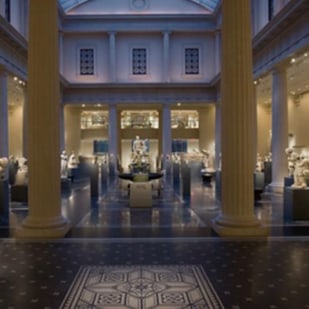Wadi Natrun
After the advent of Christianity, the uadi (the dry river bed) began to attract many Coptic followers of St. Anthony, who sought not only an ascetic existence but also to escape the Roman oppression. About 500 monks live in the uadi, who, although they have chosen a cloistered life, welcome visitors very gladly.It is said that in the fifth century, this area was home to up to 60 monasteries, of ...
Read MoreThe Roman Amphitheatre
The Roman Amphitheater of Alexandria is the only Roman amphitheatre in Egypt, dating back to the 2nd century AD. It was discovered by chance in 1960 by the Polish Egyptian expedition to Kom el-Dekka. It was found when the expedition team was trying to remove some remains from Napoleon’s time. The theatre dates back to the 1st -2nd century BC. When this place was changing its plan and function ...
Read MoreThe Greek-Roman Museum of Alexandria
The Greek-Roman Museum of Alexandria was founded in 1892 by the kedivè Abbas II and currently has a vibrant collection of artifacts. Only a small part is presented to the public due to lack of space. Some Greek-Roman artifacts, and in particular the collection of moments, were brought here from the then Bulaq Museum (now the Egyptian Museum) in Cairo.Its 27 rooms and central gardens display ...
Read MorePompey’s Pillar
The Crusaders named this pillar “Pompey” because they mistakenly thought that Pompey’s head was buried on top of it. But Pompey himself has killed in the year 48 BC, and the column was erected later, in the year 292 AD. Originally this column was taken from the magnificent temple of Serapis. It is made of pink granite, the capital is in Corinthian style, and its base is 26.85 meters high; ...
Read MoreThe Catacombs of Kom el-Shuqafa
To visit the catacombs, one descends on a staircase wrapped around a central well into which the bodies of the deceased were lowered. This leads to the tombs on the three levels dug into the rock.On the first level, there is a central round room and a large banquet hall, the Triclinium, where relatives and friends paid their last respects to the deceased. The considerable amount of pottery ...
Read More






